This post may contains affiliate links. Read our full disclosure here.
My first batch of homemade blackberry wine taught me an unforgettable lesson about fruit wine aging. After weeks of fermenting and bottling, I couldn’t resist cracking one open immediately—it was sharp, harsh, and honestly a bit disappointing. Six months later, that same wine had transformed into something completely different: smooth, complex, and deliciously sophisticated. The difference wasn’t magic—it was simply time.
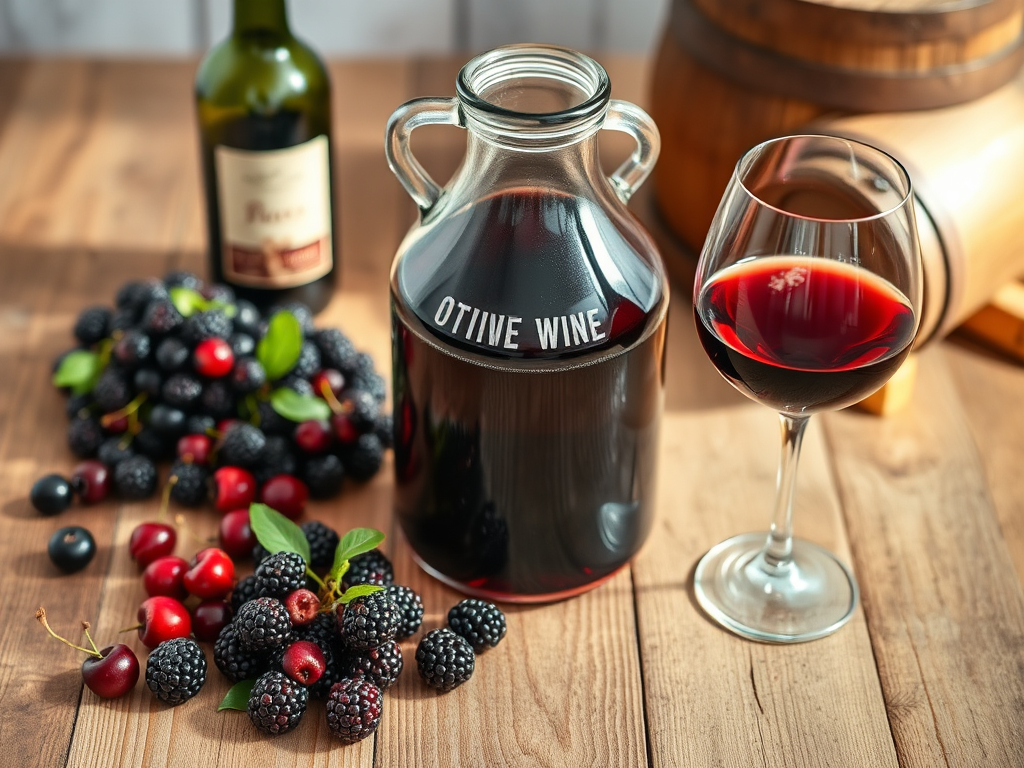
The process of fruit wine aging is often misunderstood or rushed by beginning winemakers. While commercial wines have their aging schedules down to a science, home fruit winemakers often wing it or skip this crucial step entirely. But giving your fruit wines proper aging time can make the difference between an “okay” result and one that has your friends begging for your secret technique.
The Real Magic Behind Fruit Wine Aging
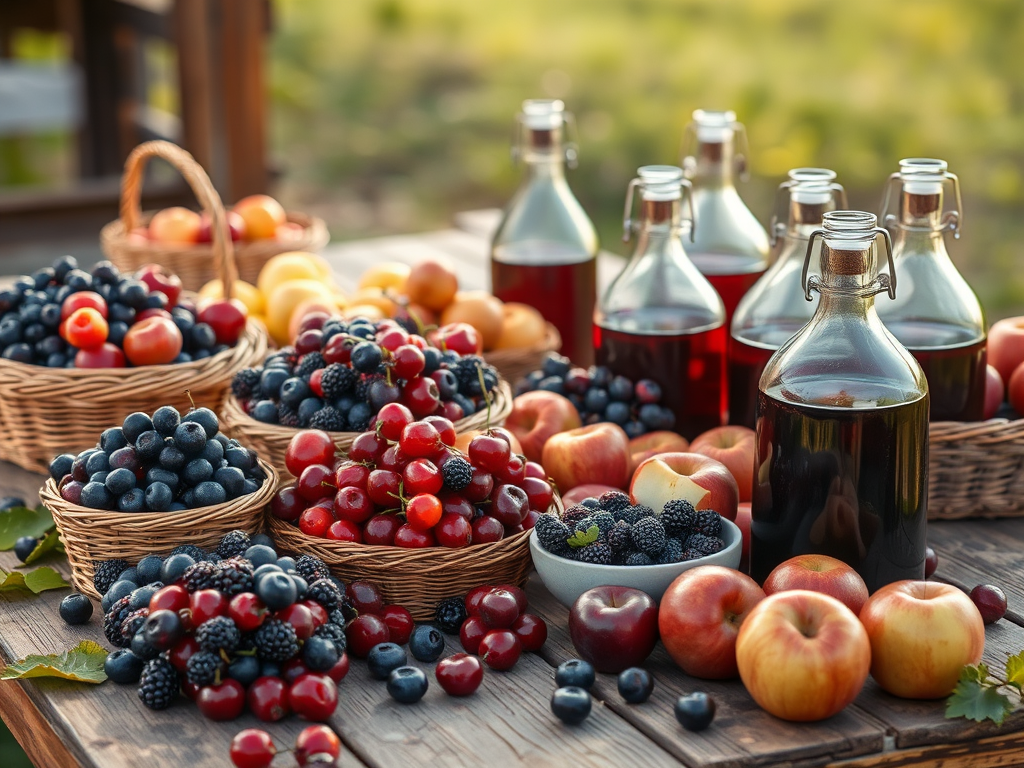
When you first bottle fruit wine, you’re capturing potential, not perfection. During fruit wine aging, a fascinating series of chemical reactions takes place. Harsh acids soften, tannins become more integrated, and subtle flavor compounds develop that weren’t there initially. This transformation is why patience pays off so dramatically with homemade fruit wines.
My friend Sarah once compared drinking an unaged fruit wine to listening to musicians tune their instruments—all the right notes exist, but they haven’t come together yet. After proper aging, those same notes harmonize into something beautiful. The process transforms sharp edges into velvety smooth textures and brings forward complexities that were hidden in youth.
The benefits of fruit wine aging include:
- Deeper, more developed flavor profiles
- Improved mouthfeel and texture
- Better integration of sweetness and acidity
- Clearer appearance as sediment settles
- Reduced harshness from high-alcohol content
Unlike commercial grape wines, fruit wines often have different structural components that influence how they age. Many fruits naturally have higher acidity and less tannin than grapes, which affects how time impacts their flavor development. Understanding these differences is key to successful fruit wine aging.
Which Fruits Create Age-Worthy Wines?
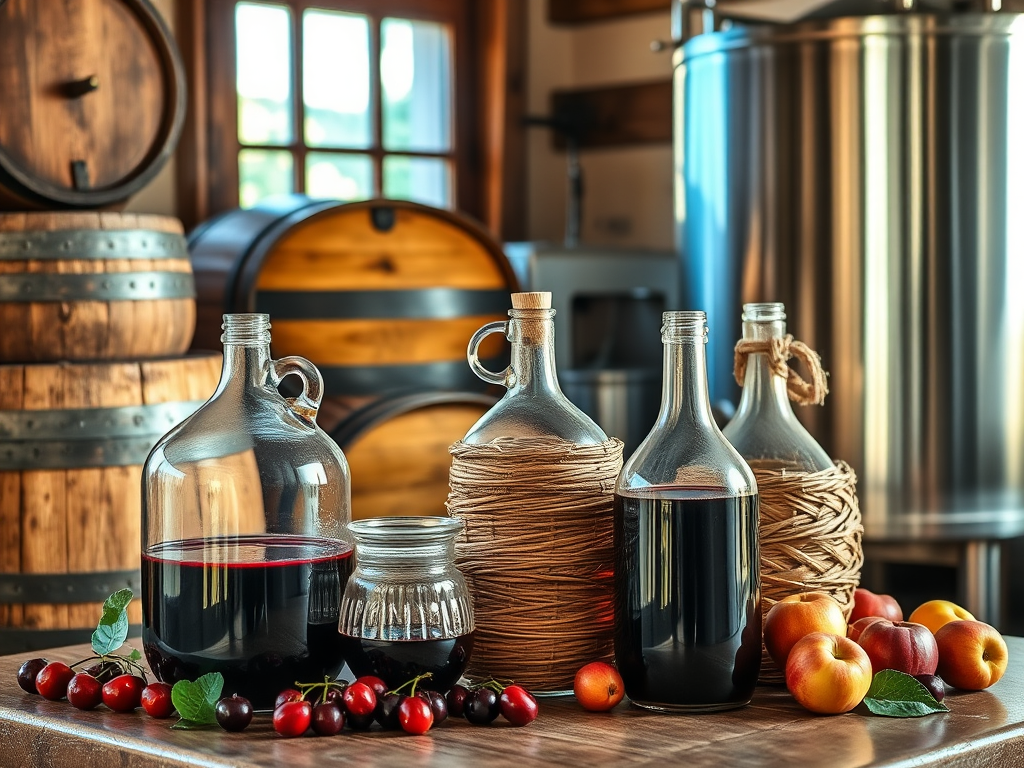
Not all fruit wines benefit from extended aging. The aging potential largely depends on the fruit’s natural composition. Darker berries like blackberries and elderberries typically age beautifully due to their higher tannin content and robust flavor profiles that can withstand and improve with time.
When I created my first blackberry wine batch, waiting 18 months transformed it from good to exceptional. The harsh edges mellowed, allowing subtle blackberry notes to shine through with a complexity that wasn’t present initially. This dramatic improvement is typical for tannin-rich fruits.
Here’s a guide to fruit wine aging potential by fruit type:
| Fruit Type | Ideal Aging Period | Expected Changes |
|---|---|---|
| Blackberry/Elderberry | 12-36 months | Develops deeper complexity, smoother tannins |
| Cherry | 18-60 months | Gains spice notes, mellows tartness |
| Plum | 12-48 months | Softens astringency, builds rounded body |
| Apple/Pear | 6-12 months | Balances acidity, improves clarity |
| Strawberry/Peach | 3-6 months | Brief mellowing before flavor fades |
Lighter fruits like strawberry and peach tend to lose their vibrant fresh character with extended aging. My strawberry wine peaked around four months and started tasting flat by eight months. These delicate wines are better enjoyed within their first year while their fruity essence remains bright.
Selecting the Perfect Vessels for Fruit Wine Aging
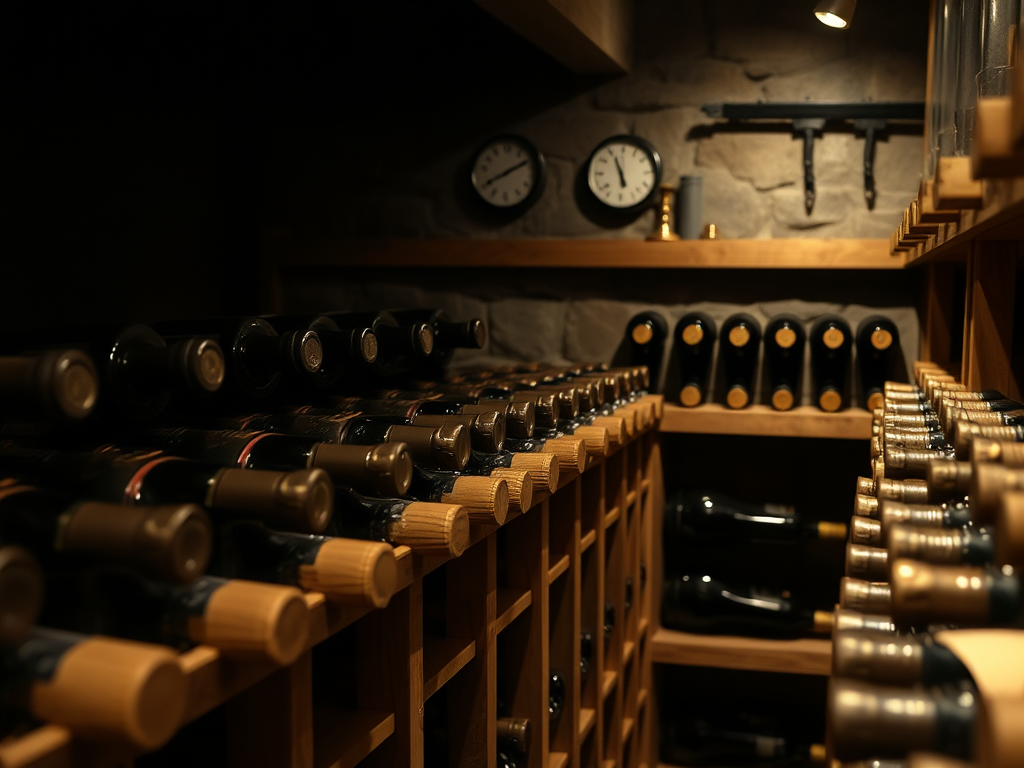
The container you choose for fruit wine aging significantly impacts the final product. Each option offers different benefits and potential challenges that can make or break your wine’s development. The three main options are glass, oak, and stainless steel—each with distinct advantages.
Glass carboys remain the gold standard for most home fruit winemakers. They’re non-reactive, allowing you to see your wine’s clarity development and sediment formation without introducing unwanted flavors. The airtight environment they provide when properly sealed prevents oxidation while allowing the fruit wine aging process to unfold naturally.
Oak barrels introduce an entirely different dimension to fruit wine aging. They allow minimal oxygen exchange (micro-oxygenation) and contribute vanilla, spice, and structural compounds. My cherry wine aged in a small oak barrel took on beautiful cinnamon and vanilla notes that complemented the fruit perfectly. However, oak requires more maintenance and monitoring for potential contamination.
Container options for fruit wine aging:
- Glass carboys – Neutral, visible aging progress, excellent for most fruit wines
- Oak barrels – Adds complexity, best for robust fruit wines that can handle oak influence
- Stainless steel – Neutral like glass but without visibility, good for commercial operations
- Wine bottles – Final aging vessel once bulk aging is complete
Avoid using plastic containers for long-term fruit wine aging. They can be permeable to oxygen and may leach unwanted compounds into your wine over time. When my neighbor tried aging his raspberry wine in food-grade plastic for a year, it oxidized much faster than the same wine stored in glass.
Creating Ideal Environment for Fruit Wine Maturation
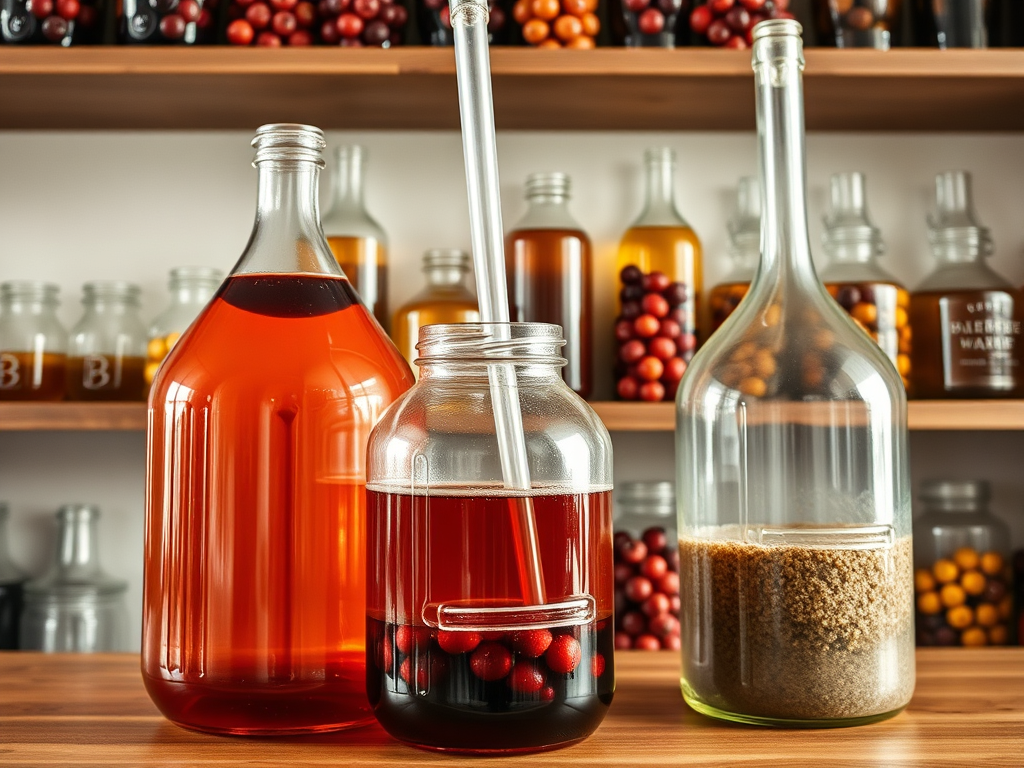
Environment matters tremendously when it comes to fruit wine aging. The wrong conditions can destroy months of work, while the right setup can help your wine reach its full potential. Temperature stability is perhaps the most critical aging factor, with fluctuations causing premature aging or off-flavors.
The ideal fruit wine aging temperature hovers between 55-60°F (13-16°C). This cool-but-not-cold range slows aging just enough for flavors to develop gradually without stalling the process entirely. My basement maintains about 58°F year-round, making it perfect for wine storage. When I compared the same batch of plum wine stored in my temperature-controlled basement versus a closet with fluctuating temperatures, the difference after a year was remarkable.
Key environmental factors for optimal fruit wine aging:
- Consistent temperature (55-60°F/13-16°C)
- Darkness (UV light degrades wine rapidly)
- Moderate humidity (65-70% prevents cork drying)
- Low vibration (keeps sediment settled)
- Proper bottle orientation (horizontal if corked)
You don’t need an elaborate wine cellar to achieve proper fruit wine aging conditions. A dedicated basement corner, under-stair space, or even a temperature-controlled cabinet can work perfectly. My friend converted an old refrigerator with a temperature controller into an excellent aging chamber for under $100. The wine’s terroir-related characteristics are preserved beautifully in these controlled conditions.
The Essential Process of Racking During Fruit Wine Aging
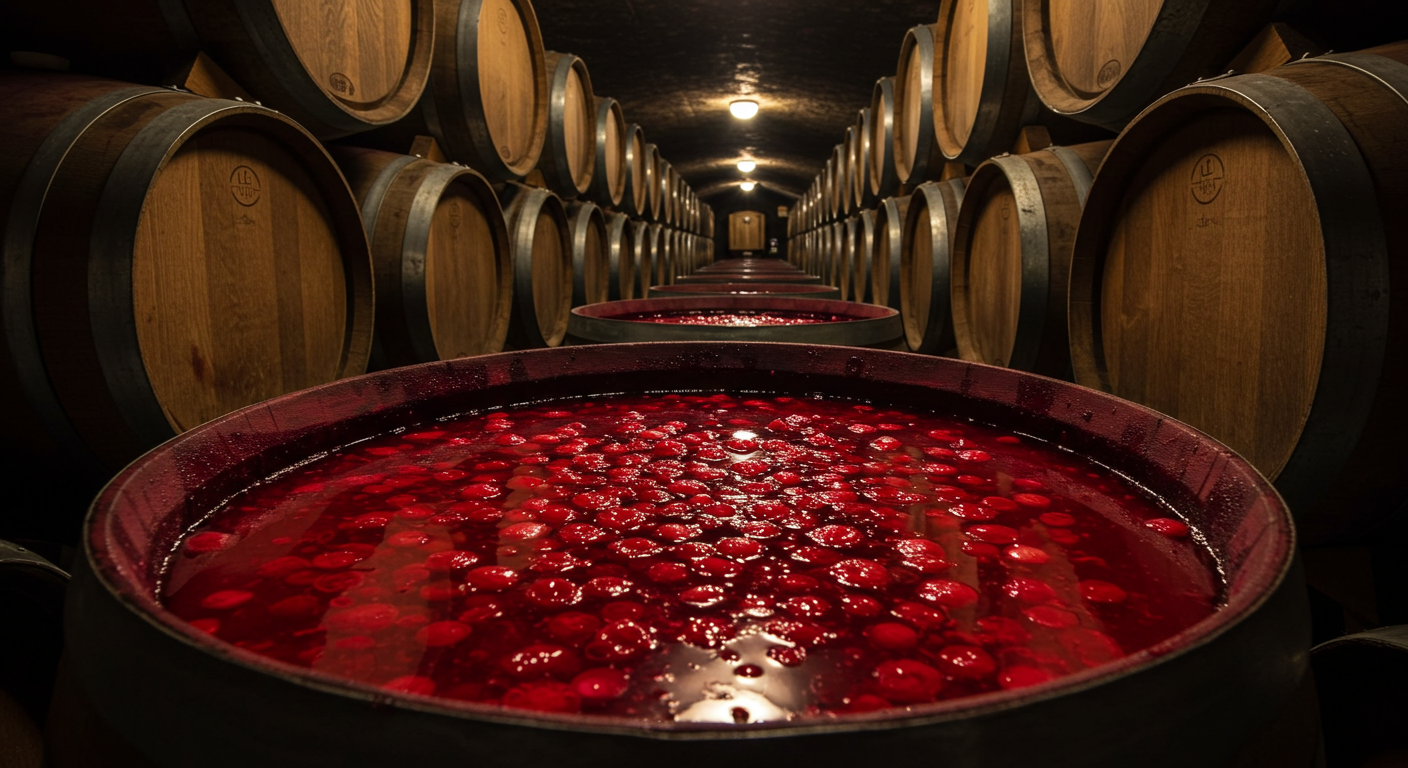
Racking—the process of transferring wine off its sediment—is a crucial but often overlooked aspect of fruit wine aging. Proper racking removes dead yeast cells and fruit particulates that could otherwise impart bitter flavors or create unwanted off-characters in your maturing wine.
My first elderberry wine taught me the importance of racking the hard way. I left it on the lees (dead yeast) too long during aging, resulting in a slightly sulfurous flavor that took months to dissipate. Now I follow a regular racking schedule that has dramatically improved the quality of my aged fruit wines.
A typical racking schedule for fruit wine aging includes:
- First racking: After primary fermentation completes (5-14 days)
- Second racking: 2-3 months later to remove fine sediment
- Third racking: 3-6 months later for final clarification
- Additional rackings: As needed if significant sediment continues forming
Each transfer should be done with minimal splashing to prevent exposing your wine to excessive oxygen. Wine thief samples between rackings help you monitor progress without disturbing the entire batch. The fermentation process fundamentals established early on will impact how your fruit wine responds to aging.
Natural clarification aids like bentonite clay, egg whites, or gelatin can help remove suspended particles during fruit wine aging if your wine remains cloudy after several months. However, time and gravity often perform this function perfectly if you’re patient with the process.
The Art of Blending and Correcting During Fruit Wine Aging
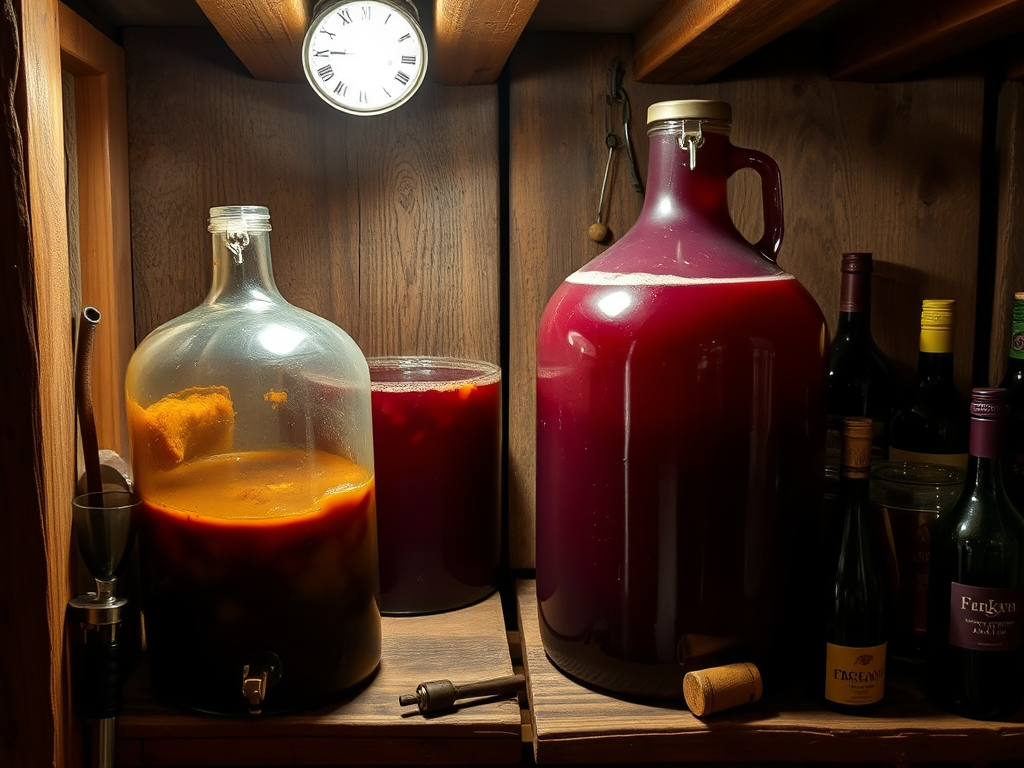
Blending isn’t just for commercial wineries—it’s a powerful technique that home fruit winemakers can use to improve their creations during the aging process. Combining different batches or even different fruit wines can create balanced, complex results that exceed what any single wine might achieve alone.
My apple wine was too acidic after six months of fruit wine aging, but blending it with a slightly sweet pear wine created a perfect balance that neither wine had individually. Small test blends in wine glasses help determine the ideal proportions before committing your entire batch.
Effective blending strategies during fruit wine aging:
- Combine high-acid wines with lower-acid ones to balance pH
- Mix older vintages with younger ones for complexity
- Blend complementary fruit flavors (apple/pear, blackberry/elderberry)
- Add oak-aged portions to unoaked wine for structure
- Create test blends in small amounts before scaling up
Minor corrections can also help rescue aging fruit wines that are developing problems. A touch of acid blend can brighten a flat-tasting wine, while additional tannin can add structure to wines that feel thin. These adjustments should be subtle and carefully measured to avoid overcorrection.
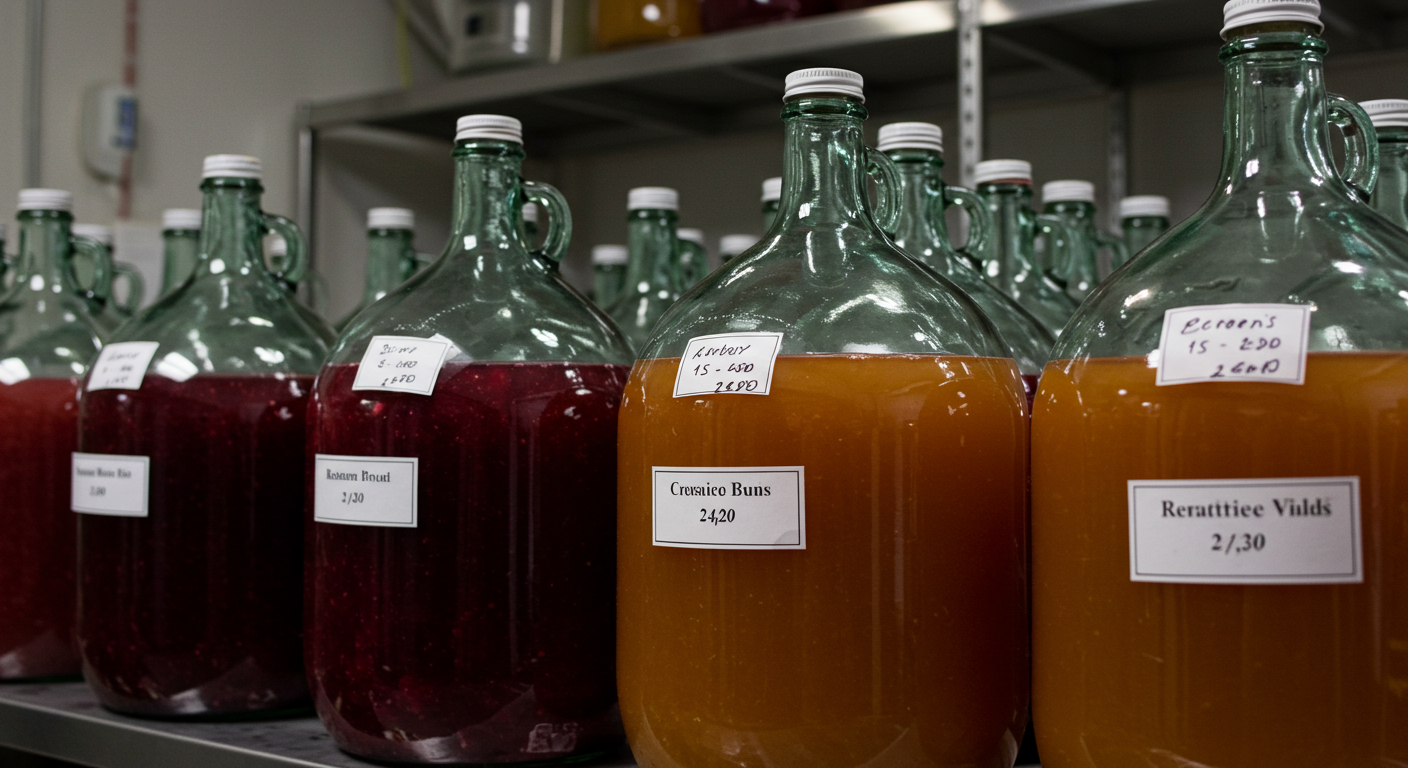
Beyond technical aspects, tasting is essential throughout the fruit wine aging journey. Taking notes on how your wine changes helps develop your palate and informs future batches. My wine journal entries from over the years show clear patterns in how different fruits evolve during aging, helping me make better timing decisions for different wine styles.
Common Fruit Wine Aging Mistakes to Avoid
Even experienced fruit winemakers can fall victim to aging mistakes that compromise months of work. Understanding these pitfalls helps you navigate the fruit wine aging process more successfully. The most common error I’ve seen (and made myself) is rushing the aging timeline due to impatience.
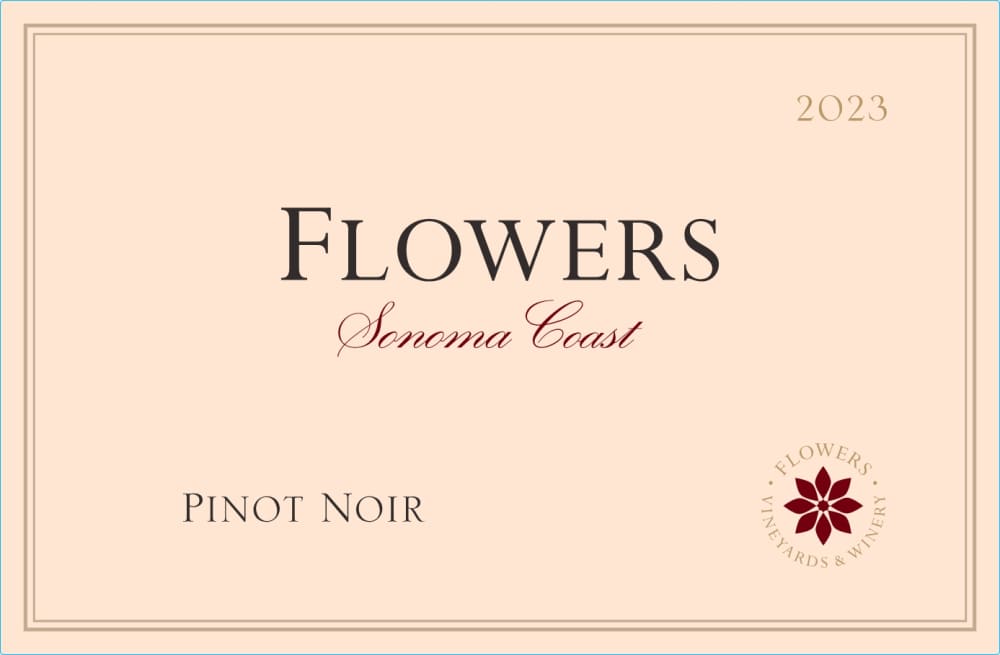
Poor sanitation during transfers creates another major risk to aging fruit wines. Bacteria or wild yeast introduced during racking can multiply slowly during long aging periods, potentially spoiling your wine. Always sanitize every piece of equipment that contacts your wine, including sampling tools and airlocks.
Fruit wine aging mistakes to avoid:
- Improper airlock maintenance allowing oxygen exposure
- Storing wine in environments with temperature fluctuations
- Over-aging delicate fruit wines past their prime
- Neglecting to taste periodically to catch problems early
- Using inappropriate containers (plastic, reactive metals)
The aging window varies dramatically between fruit types. Over-aging is as problematic as under-aging. My strawberry wine reached its prime around 4 months and began losing its vibrant character by 8 months. Meanwhile, my blackberry port-style wine continued improving for three years before reaching its peak.
Another common issue is forgetting about wine once it’s tucked away. Set calendar reminders for tasting and racking schedules. My friend lost an entire batch of beautiful plum wine to vinegar because she forgot about it in her basement for two years with a compromised airlock. Regular monitoring prevents such heartbreaking outcomes.
Tracking and Documenting Your Fruit Wine Aging Journey
Keeping detailed records transforms fruit wine aging from guesswork into a repeatable craft. A dedicated wine journal helps track what works, what doesn’t, and how different fruits evolve over time. After several years of consistent documentation, patterns emerge that make future batches more predictable and successful.
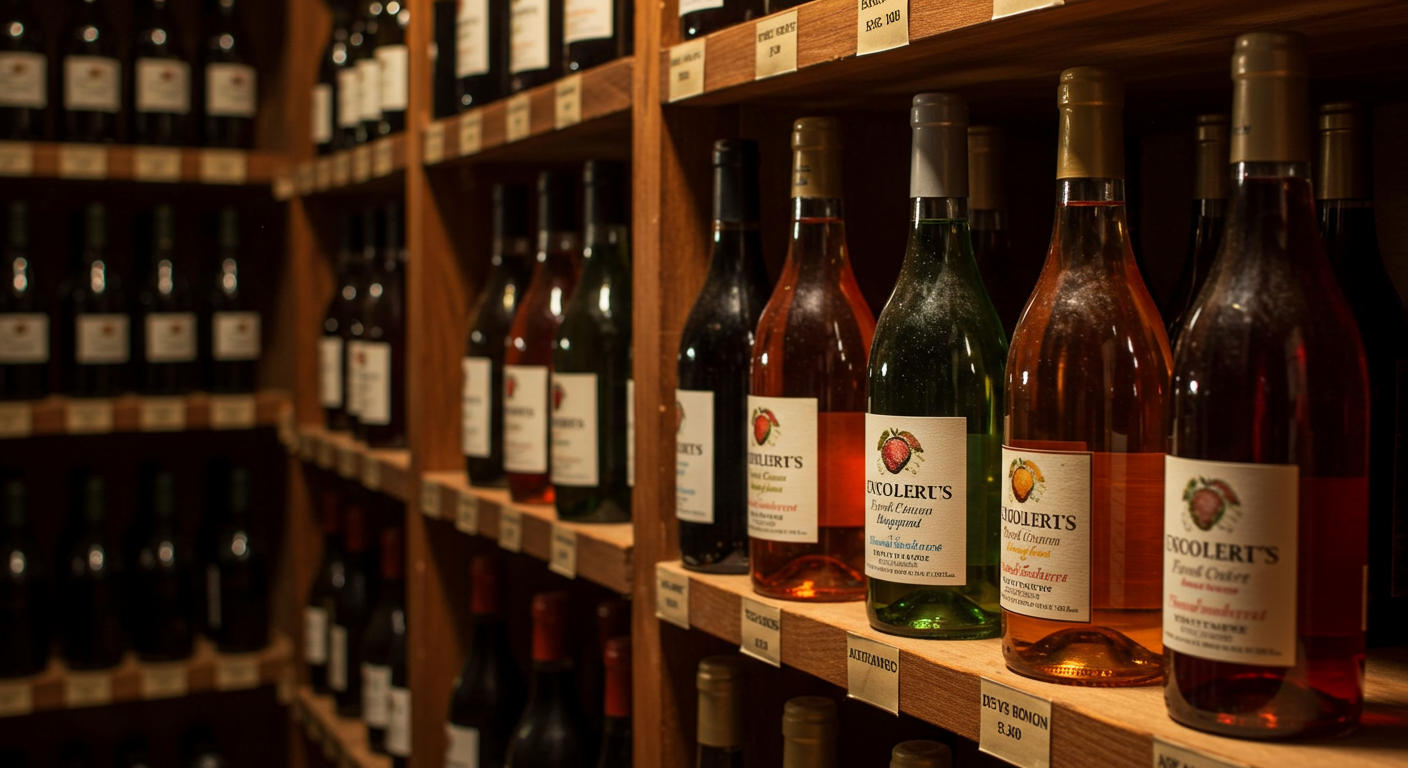
My wine journal includes basic information like fruit type, harvest date, and recipe details, but the most valuable section is the tasting notes taken throughout the aging process. Comparing how a wine tastes at bottling versus 3, 6, and 12+ months provides invaluable insight for future batches.
Essential elements to track during fruit wine aging:
- Acidity levels and pH changes over time
- Color development and clarity improvements
- Aroma evolution (fruity to complex)
- Texture and body development
- Balance between sweetness, acidity, and tannin
Small sample bottles set aside during bottling create a perfect opportunity to track development without opening full bottles. My method involves filling several 187ml bottles from each batch, then opening them at predetermined intervals to document changes. This systematic approach has dramatically improved my understanding of how different fruits mature.
Photographs also provide valuable documentation. Images showing color development and clarity improvements create a visual record of your wine’s journey. This visual timeline, combined with written notes, forms a comprehensive guide for future batches and helps identify the ideal drinking window for each fruit type.
From Patience to Perfection: The Rewards of Proper Aging
The fruit wine aging journey requires patience, but the rewards are worth every moment of waiting. Well-aged fruit wines develop characteristics that simply can’t be rushed or replicated through shortcuts. The transformation can be truly remarkable, turning good homemade wine into something extraordinary.
When you finally open that perfectly aged bottle of fruit wine, you’re experiencing the culmination of nature’s bounty, scientific principles, and your own craftsmanship. The process connects you to winemaking traditions that stretch back thousands of years while allowing you to create something uniquely your own.

Fruit wine aging isn’t just about improving flavor—it’s about developing a deeper appreciation for the craft itself. Each batch teaches something new about the fruits you work with and the subtle art of patience. The next time you’re tempted to open that freshly bottled blackberry wine, remember that time is your final and perhaps most powerful ingredient.
Ready to start your own fruit wine aging adventure? Begin with fruits known for aging well, invest in proper storage conditions, and commit to the documentation that will guide future batches. Your patience will be rewarded with complex, delicious wines that showcase the true potential of your homemade creations. And remember—the best fruit winemakers aren’t those with the fanciest equipment, but those with the wisdom to let time work its transformative power.




